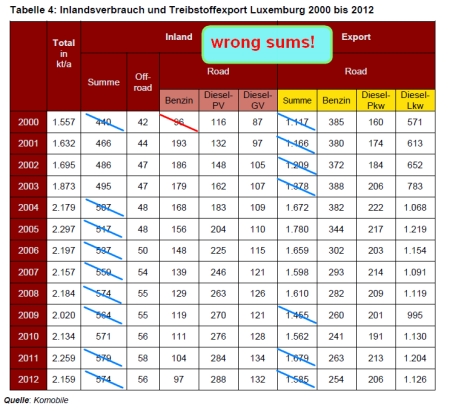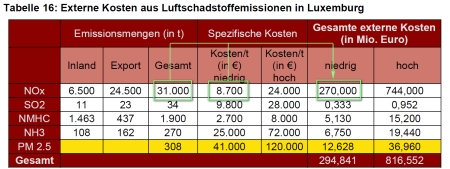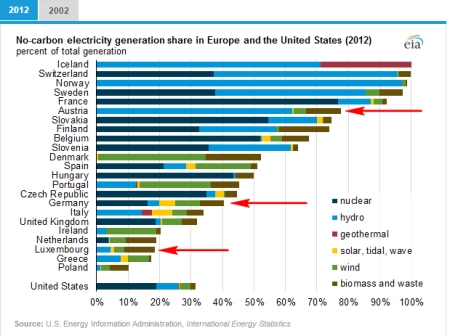1. Part 1 (Introduction; Shutting down…)
2. Part 2 ( costs)
3. Part 3 (errors and the 3.5 billion cost)
4. Part 4 (Diesel bashing and conclusion)
This last part holds some musings on Ewringmann’s Diesel comments, and make as general conclusion of the report.
8. Diesel bashing
The green movements have taken delight in a new fad: the Diesel bashing. All evils, all bad pollution problems are the fault of the Diesel engines that foolish politicians do favor (at least in the EU) by lower taxes. These people do not remember or consider three important facts:
- Diesel engines have a much higher efficiency as gasoline engines (about 35% versus 25%), so for a given work, they consume less fuel and emit less CO2
- it was green policy to push the Diesel engine as a solution for lower CO2 emissions
- high temperature/high pressure thermal engines emit more NOx and more nano-particles than lower pressure ones; as the newest gasoline direct injection engines (GDI) operate also at higher pressures, they have the same problems with these emissions as the Diesels (plus some 20 times higher CO emissions), but also have a higher power and better mileage than the traditional atmospheric models. See this figure from Delphi:
There are no big differences in emissions between such an injection-fuel car and an EU-6 Diesel car; GDI cars may even exceed the EU6 norm (link of picture). If efficiency is what counts, the Diesel engine remains the king since its invention by Rudolf Diesel. For a more sober comment, read this comment “Do diesels have a future?“.
Now Ewringmann writes that about 85% of the external costs from the sold fuel come from Diesel cars or trucks. As Diesel fuel accounts for 83% (inland) and 84% (export) of the quantities of fuel sold, this fact is not a rocket-science conclusion, but self-evident. If all Diesels were forcibly changed to gasoline, 100% of the cost would come from gasoline! When the author asks for an “Überdenken der Dieselpolitik”, Diesel bashing won’t help. He should clearly say what he thinks: lower (strangulate?) private and commercial transports on the roads by political regulation!
9. A short conclusion
I ended part 1 of this discussion with many citations, where in my opinion Ewringmann was right. All these citations finally have one common argument: even when Luxembourg makes its fuels much more expensive so that the quantities exported will be drastically lowered, the environmental impact outside Luxembourg will practically remain the same. Luxembourg is not the culprit of the external costs happening abroad!
Ewringmann seems to be quite sincere in evaluating the benefits, but he really jumps the line when calculating the costs. Applying Luxembourgish cost-factors to fuel burnt outside the country is wrong, and this single “error” inflates the costs. Attaching fantasy prices to CO2 emissions is equally wrong, even if some German institutes or environmental organizations do favour extremely inflated numbers. CO2 has a clear price in Europe since many years; the price is low and does not increase as predicted. So this price of 10 €/ton should be used, and not an amount 10 times higher!
The report is easy to read, but shows the piece-wise writing (and possibly multiple authors), as Ewringmann acknowledges in his foreword. Childish errors like the rounding problems creeping up in some tables should be taboo in a publication from a serious institute.
Does the report help in making political decisions? I remain dubious, as the main lesson I take away after several careful readings is that the best option is to let things evolve without interference. As the last 3 years show a “natural” lowering trend of the fuel exports, let economy decide. A “natural” weaning will probably allow to compensate the tax losses, avoid to kill numerous jobs and economically devastate the commercially successful border regions by ill-conceived ideology driven politics.
(end of part 4, the last part)













